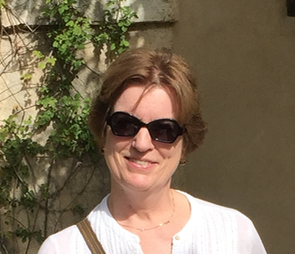Worlds in Miniature – the Microcosm in 19th-Century Art with Dr Kathy McLauchlan
In venue and online via Zoom


Worlds in Miniature – the Microcosm in 19th-Century Art with Dr Kathy McLauchlan
In venue and online via Zoom
Worlds in Miniature – the Microcosm in 19th-Century Art with Arts Society accredited lecturer Dr Kathy McLaughlan
Many 19th-century painters looked for art in the detail. As Ruskin put it, “if you can paint one leaf, you can paint the world”. This principle found its ultimate expression in the work of the Pre-Raphaelite Brotherhood, who were extraordinarily meticulous in their study of every facet of a scene – figures, setting, clothing – however minute. But throughout the 19th century, many artists and collectors delighted in small things. Some specialised in intimate genre scenes and miniature portraits, executed in an immaculate, polished style. Others were fascinated by the relationship between macrocosm and microsom in nature – the hugeness of the universe reflected in the minutiae of plant cells, or (as Blake put it) “a world in a grain of sand”. At the turn of the 19th and 20th centuries this idea spurred the imaginations of artists across Europe, including Odilon Redon (France), Mikalojus Čiurlionis (Lithuania), František Kupka (Bohemia) and Hilma af Klint (Sweden).
Session 1. Kings of Lilliput
Traditionally, the highest status has been accorded to artists who think and paint big, designing grand historical compositions for churches and palaces. But the 19th century was a golden age for private collectors, and many of them preferred the beauty of small things. Some of most celebrated artists of the time specialised in intimate genre scenes and miniature portraits, painted in an immaculate, polished style. The ‘finish’ in painting, with invisible brushwork, surfaces so smooth they looked like enamel – these were desirable qualities for many collectors, a measure of perfection in the image and the high skill and dedication of the artist. At the start of the century, the ‘troubadour’ painters were a popular alternative to grandiose neoclassical art, with their miniaturised ‘romances’ inspired by the medieval history. Similarly in the mid 19th-century, painters like Ernest Meissonier – dubbed the ‘king of Lilliiput’ by one contemporary – and Mariano Fortuny, became stars of the art world for their ability to conjure worlds in miniature. The cult of the small had arrived.
Session 2. Immaculate Truths
In 1848 a group of young art students decided to reform British art. They called themselves the Pre-Raphaelite Brotherhood in tribute to Medieval and Renaissance art, setting its honesty and conviction against the art of their own time. The latter they condemned as conventional and vacuous; above all, it lacked truth in its content and method, characterised by flashy brushwork, strong tonal contrasts and sketchy finish. The Pre Raphaelites – led by William Holman Hunt, John Everett Millais and Dante Gabriel Rossetti – embarked on an alternative route. Above all, they sought truth: truth in the content of a painting, and truth in the observation of nature. And the results can be traced in paintings like Christ in the Carpenter’s Shop by Millais or Holman Hunt’s Awakening Conscience: the painstaking method of painting, the jewel-like colour and polished finish, designed to emulate the rigour of medieval art. Last but not least, the Pre-Raphaelite paintings accumulate facts. They are extraordinarily meticulous in their study of every facet of a scene – figures, setting, clothing, setting – however small. The truth is in the detail.
Session 3. Microcosm
“To see a World in a Grain of Sand / And a Heaven in a Wild Flower / Hold Infinity in the palm of your hand / And Eternity in an hour.” At the turn of the 19th and the 20th centuries it seemed as if William Blake’s promise might be realised. Scientists were revealing new levels of reality, and exploring the relationship between macrocosm and microcosm – the hugeness of the universe reflected in the minutiae of worlds seen through the lens of a microscope, the form of the tiniest creature a pattern for the cosmos. Ernst Haeckel’s lavishly illustrated Die Radiolarien of 1862, for example, revealed a previously invisible
In venue (Winchester) and online via Zoom
Part of the 2025 Jean Bolton Memorial Study Course. Also booking:
Thursday 30th October 2025 - Small is Beautiful: The Art of the Miniaturist in the Middle Ages with Dr Sally Dormer
Friday 7th November 2025 - Precious, Portable, Private: Miniature Art in the Renaissance with Dr Paula Nuttall
Friday 14th November 2025 - Art in Miniature in the 17th and 18th Centuries with Clare Ford-Wille
Friday 21st November 2025 - The Nightingale and the Pearl: The Russian Arts in Miniature with Dr Rosamund Bartlett
Price: Individual days are available at £35 per day in venue, to include coffee/tea, light lunch with wine or soft drinks; they are £15 per session for online attendees.
Bundles of all 5 days are available as follows:
£165 per person for the whole course of 5 days in-venue in Winchester (saving £10 overall)
£70 per household for the whole course of 5 days online via Zoom (saving £5 overall)
For more information go to: https://theartssocietyhantsiowarea.org.uk/Special/Special.aspx
Tickets: https://buytickets.at/theartssocietyhampshireandisleofwightarea
Contact the organiser if required at: hampshireisleofwightarea@theartssociety.org

A lecturer specialising in 19th-century art history, I am currently a course director at the Victoria & Albert Museum, organising courses and study days on the history of art and design. I teach at several institutions, including Art Pursuits. I am a graduate of Oxford University and the Courtauld Institute, with a PhD on French 19th-century painters in Rome. I am available for both individual lectures and study days. In addition to the subjects on my page I can cover:
• Sketch and Finish in 19th-century French Painting
• Montmartre fin de siècle
• Mucha and the Slav Epic
• America and the Sublime Landscape